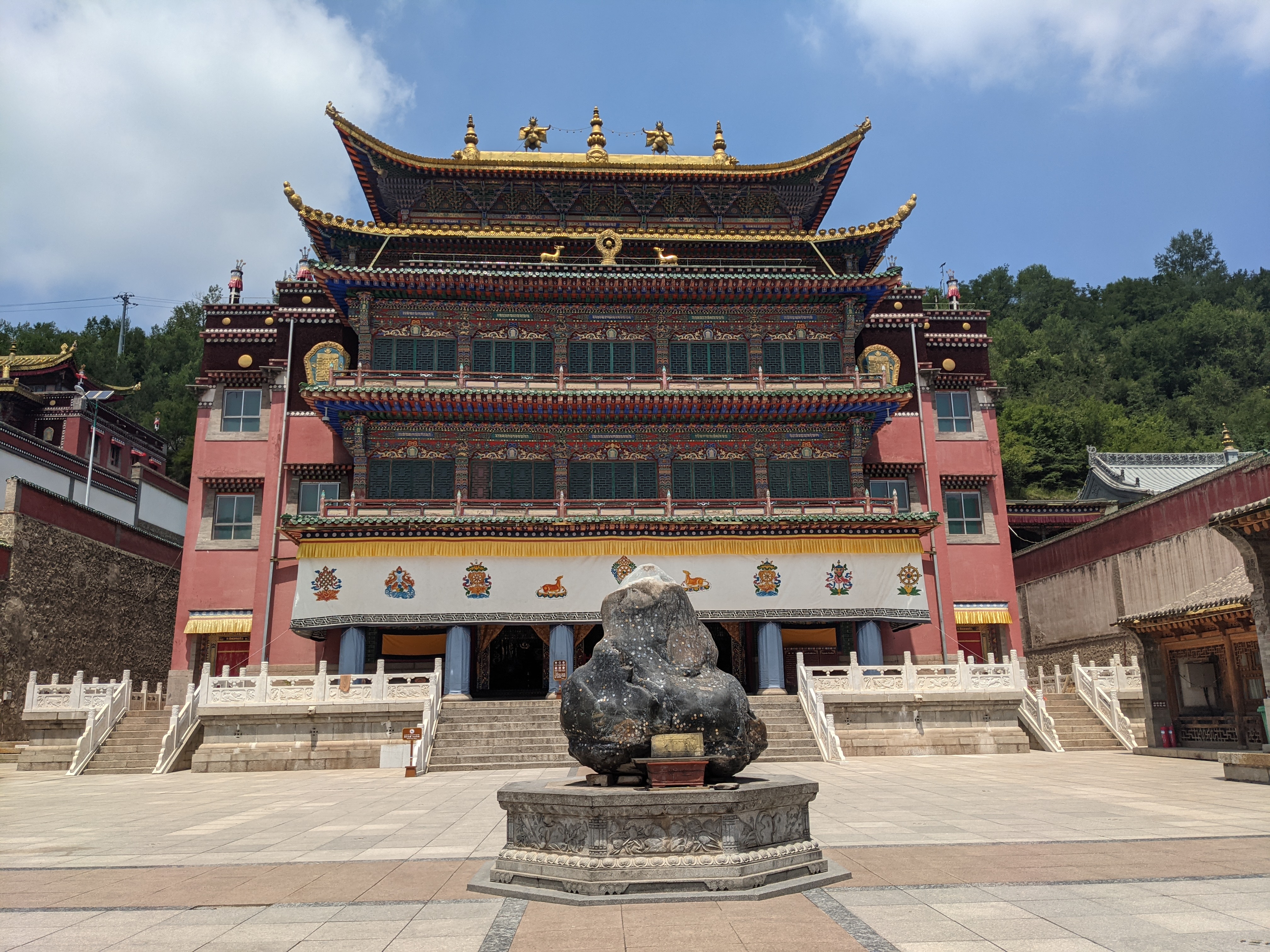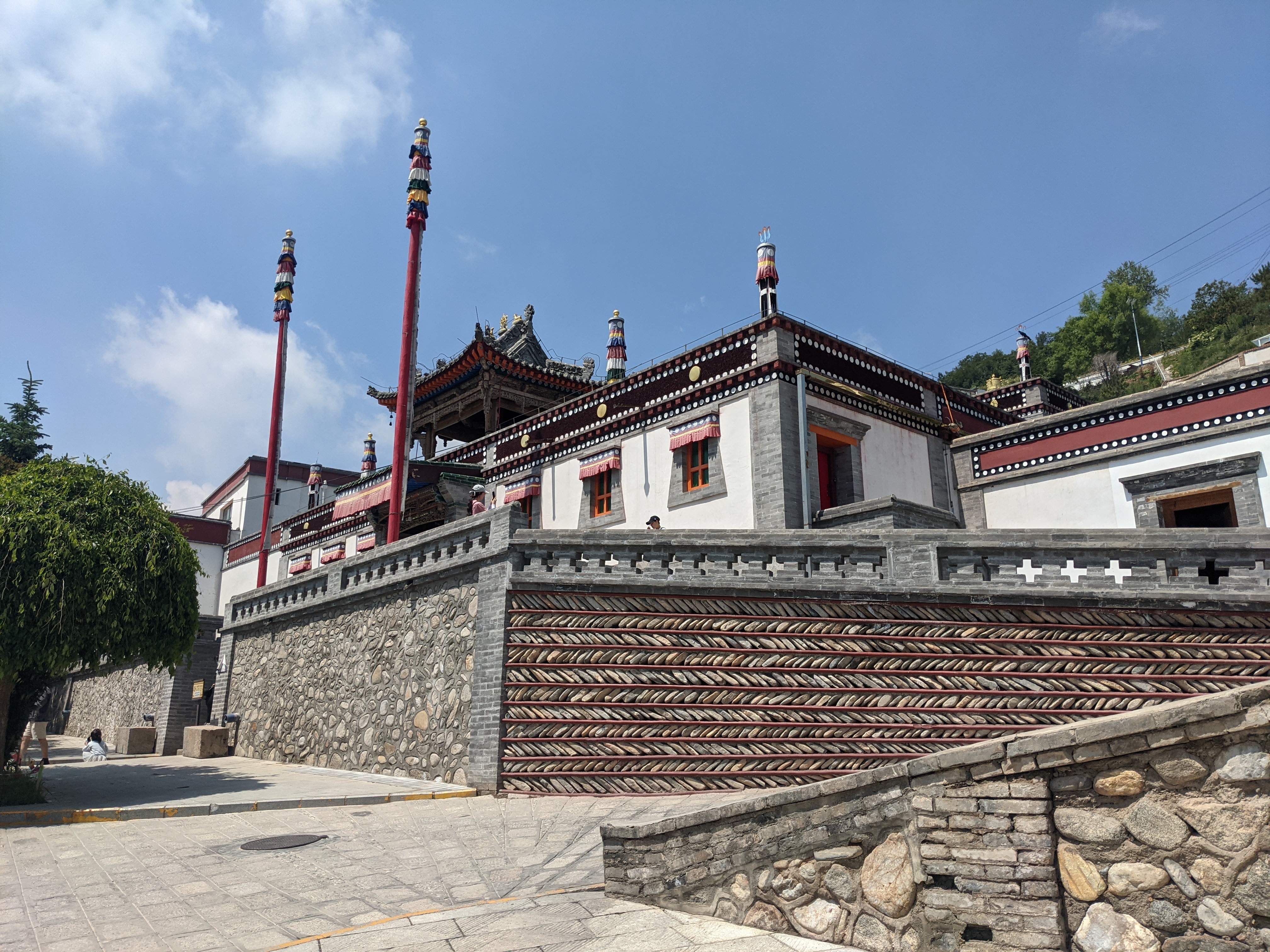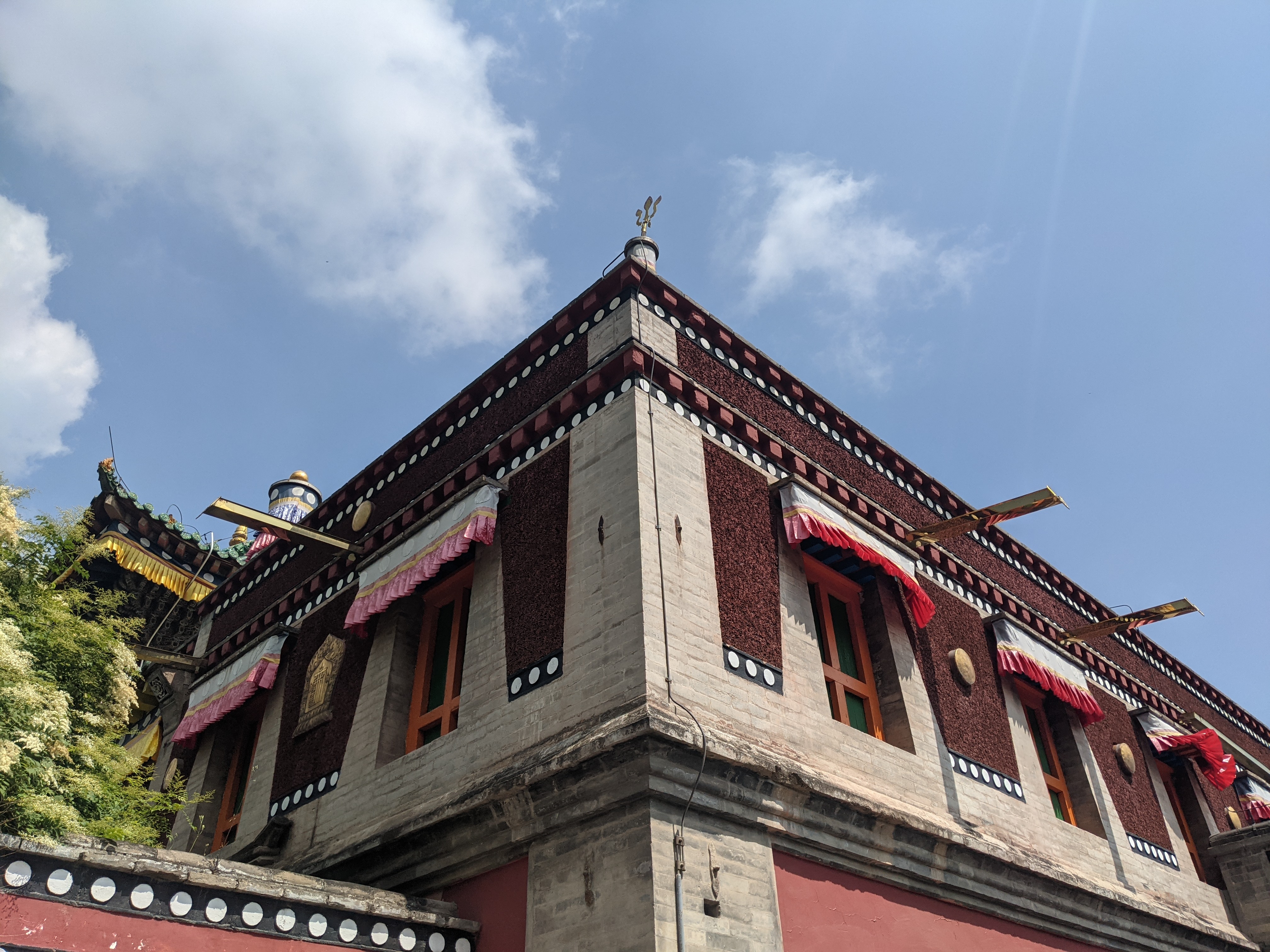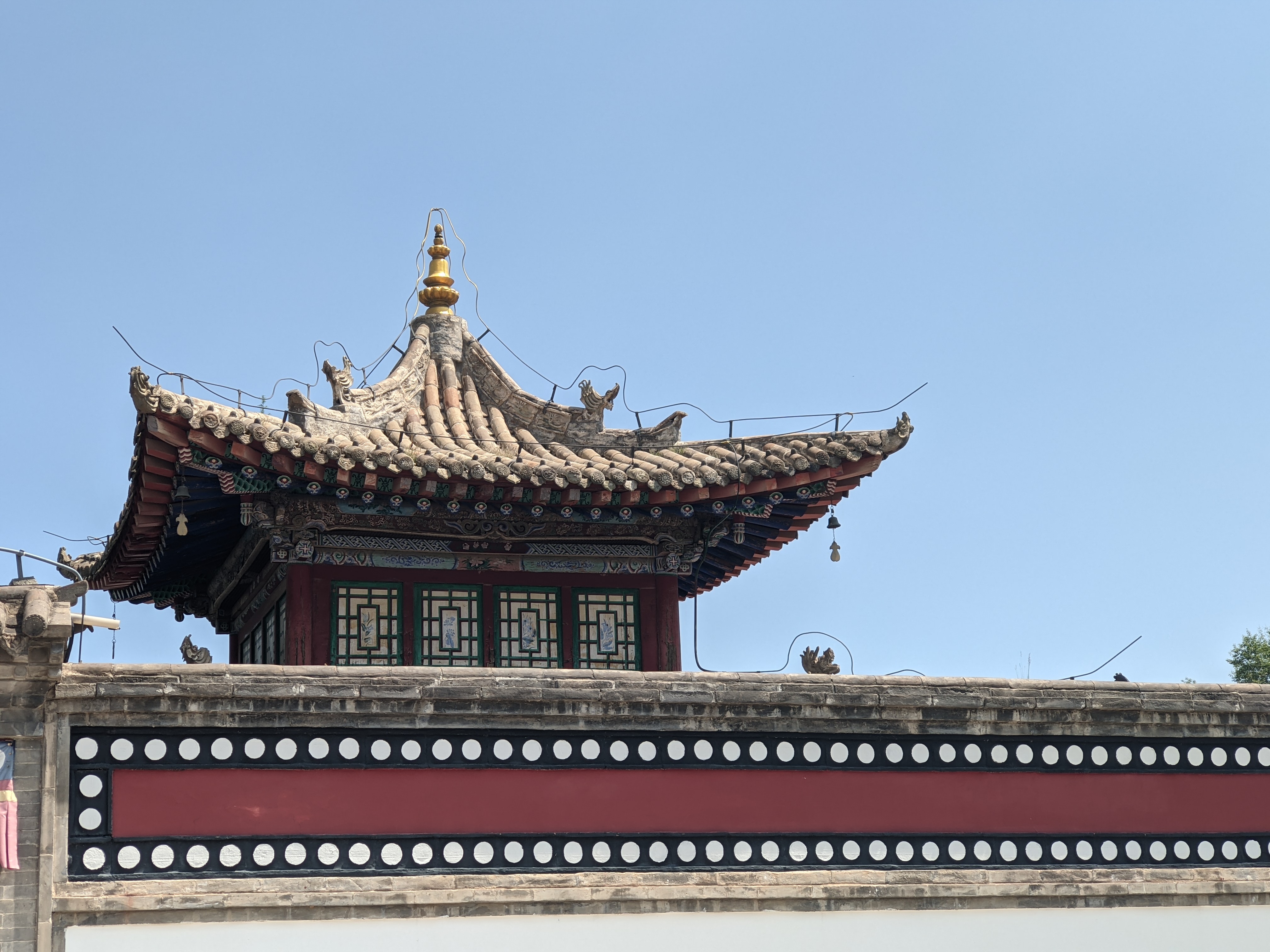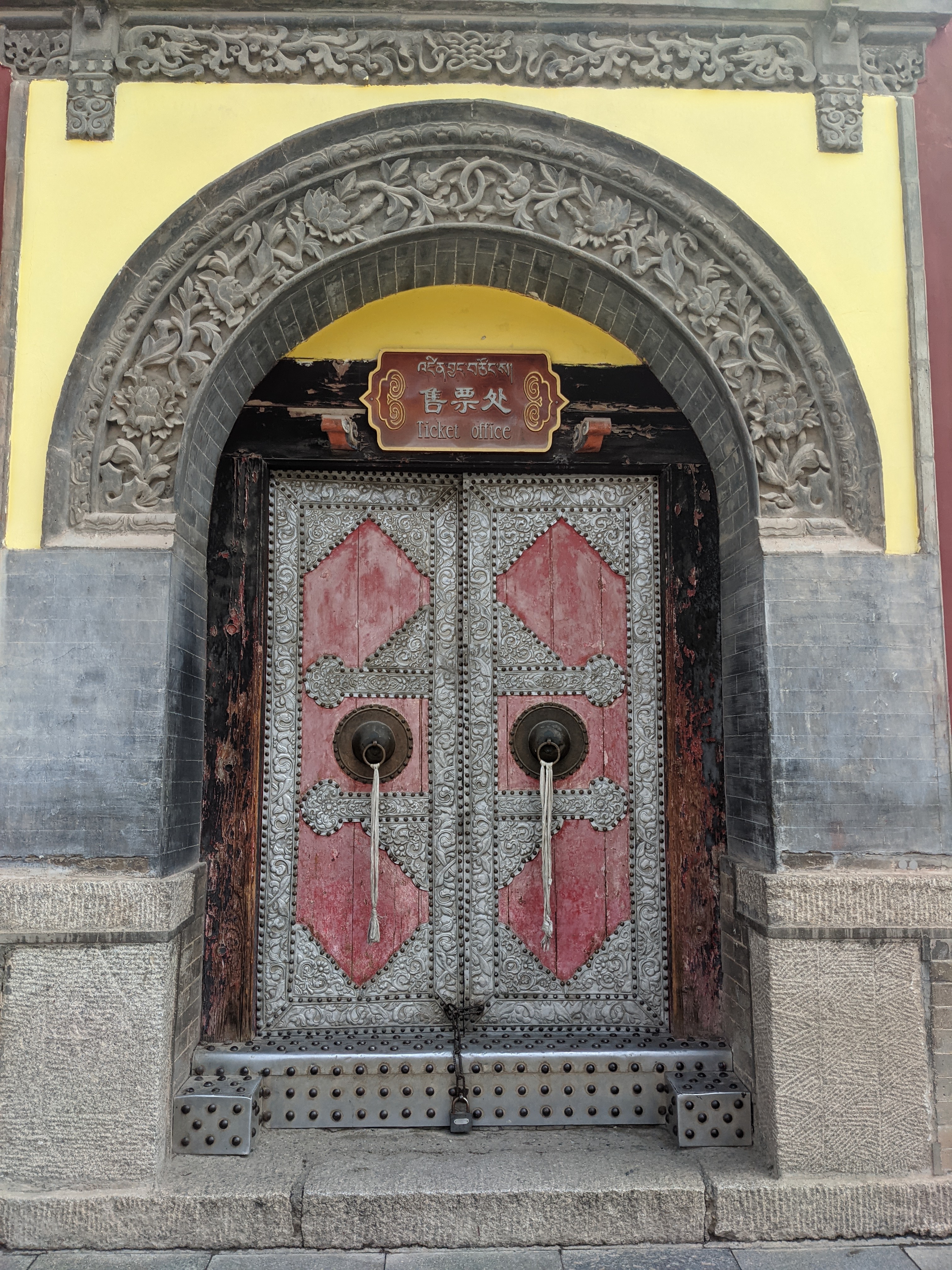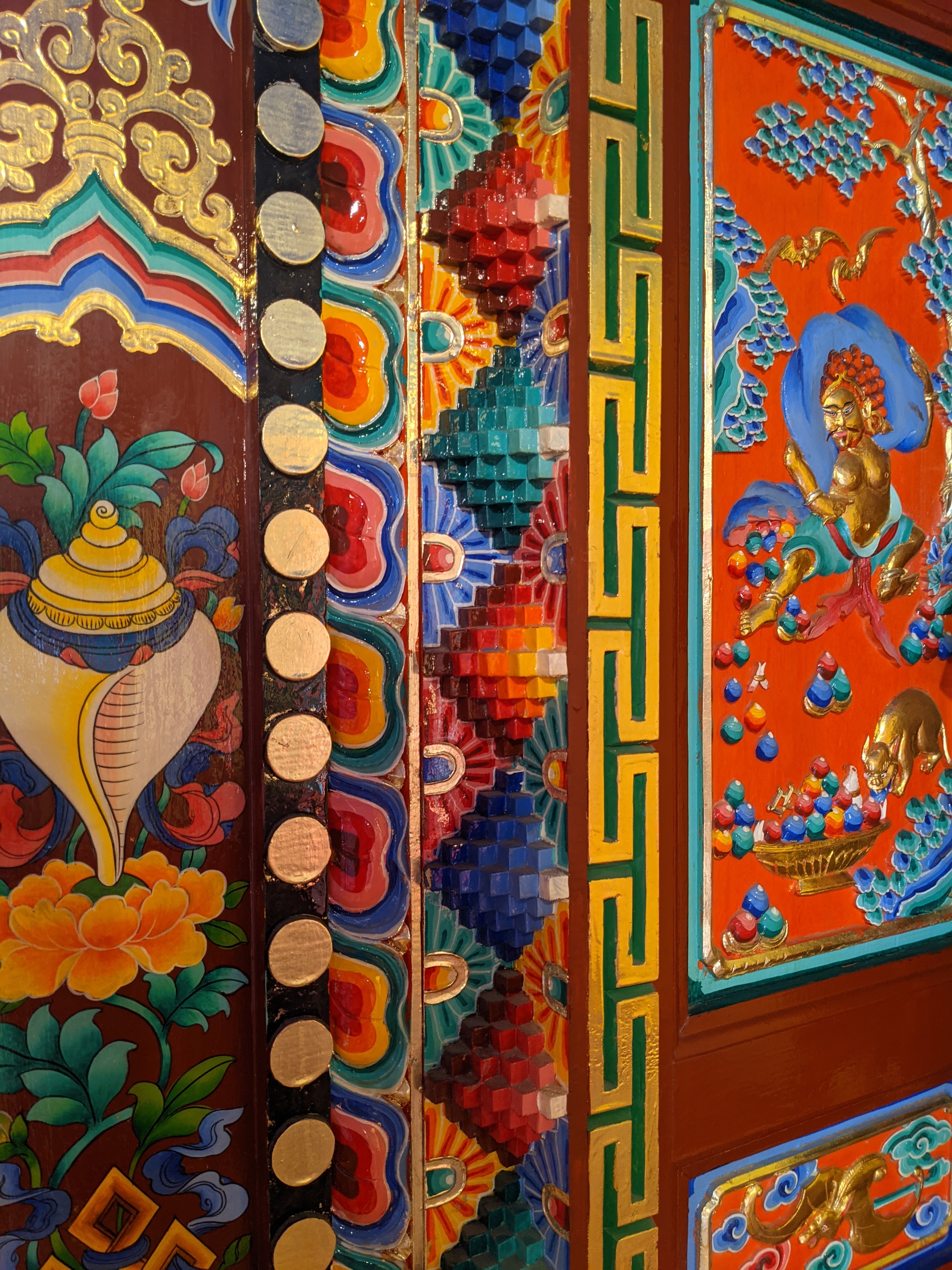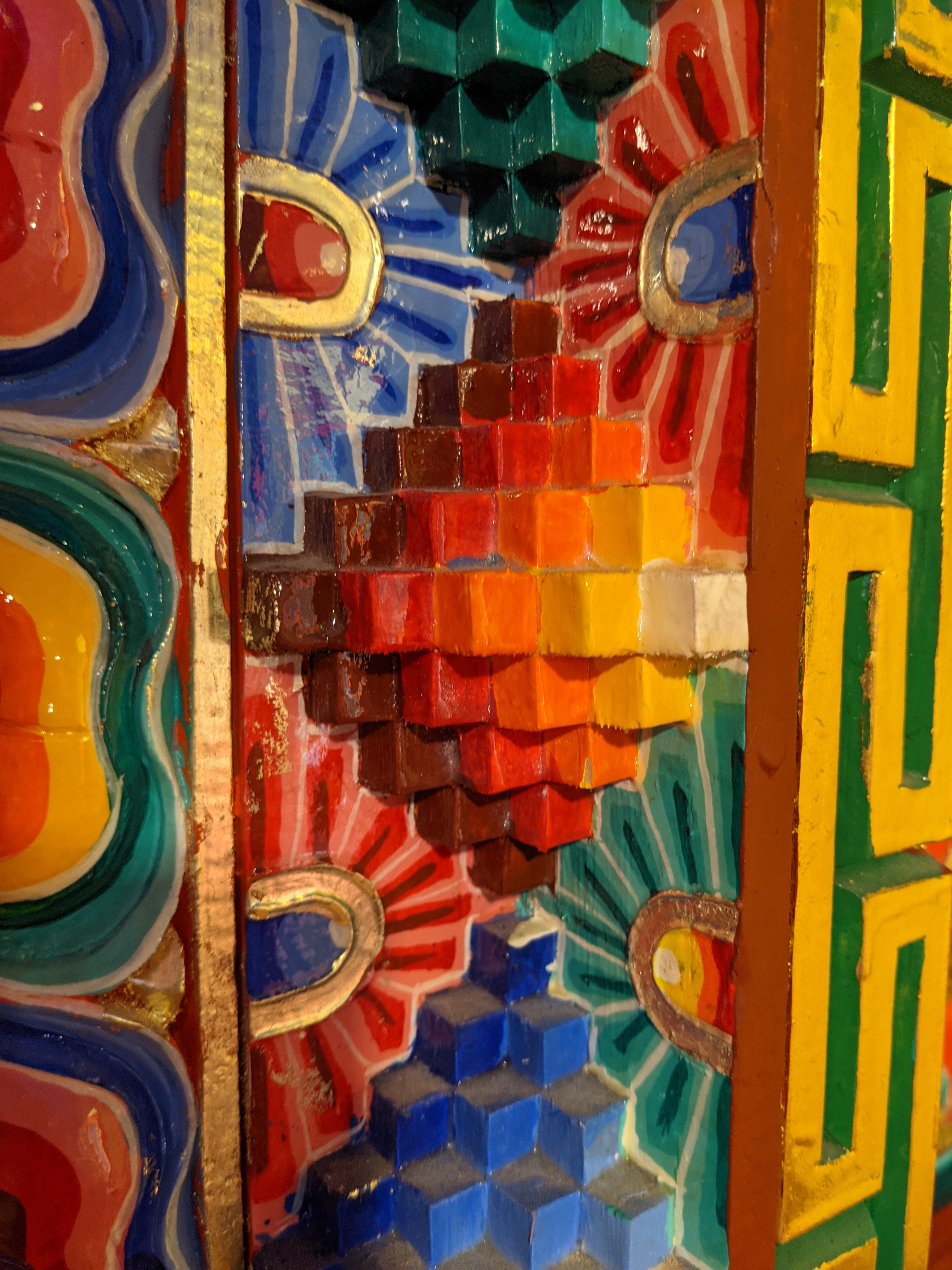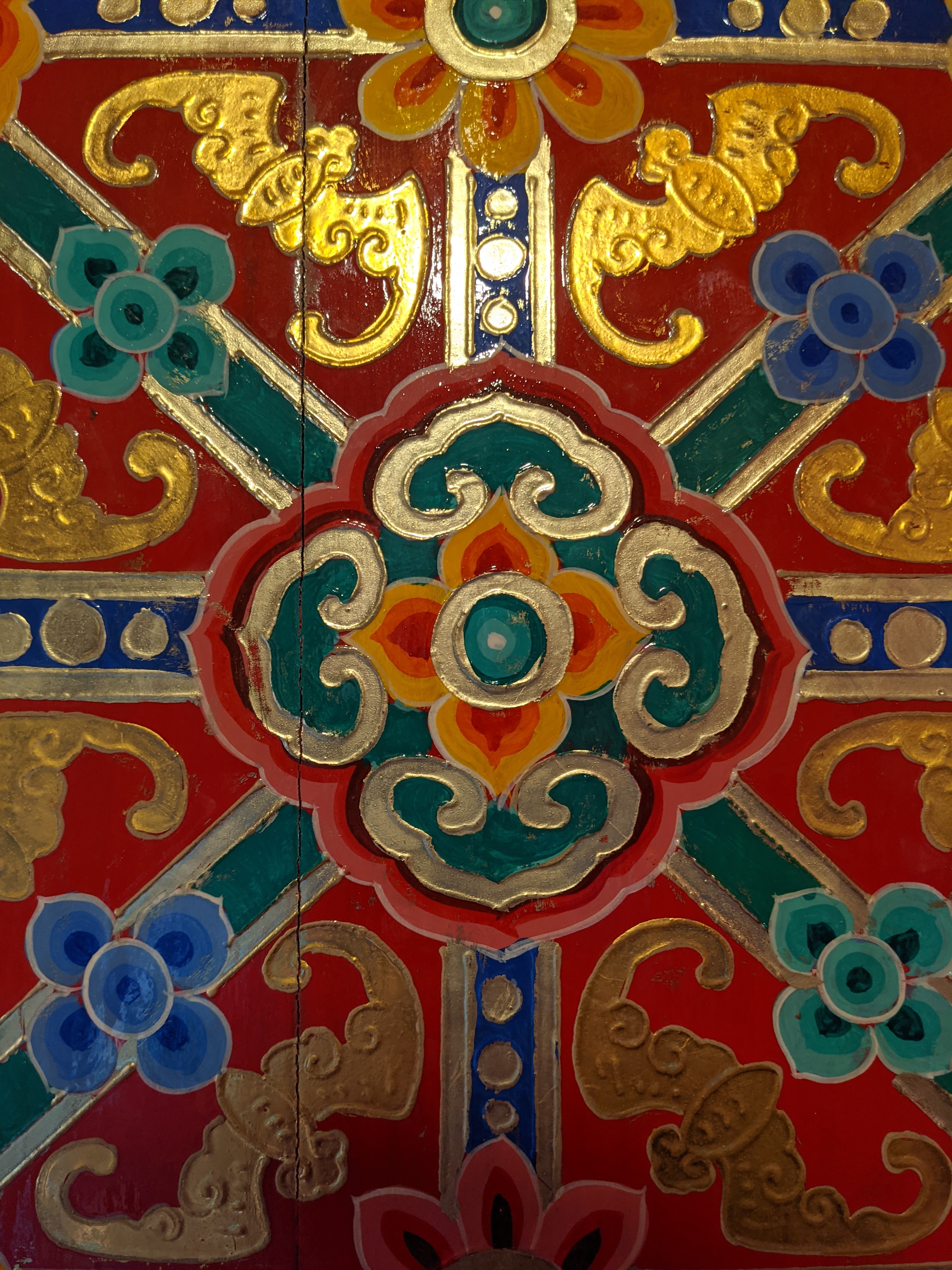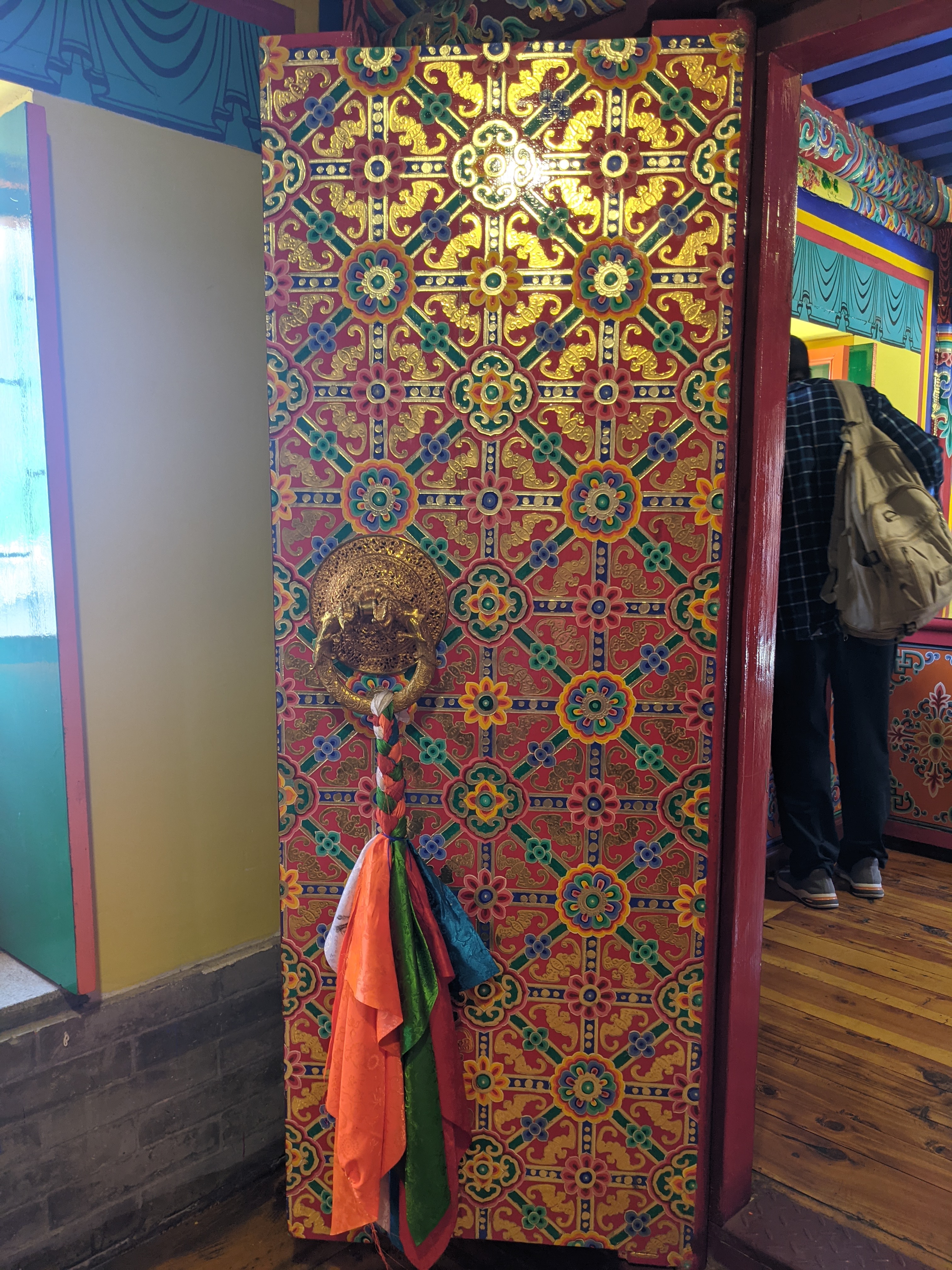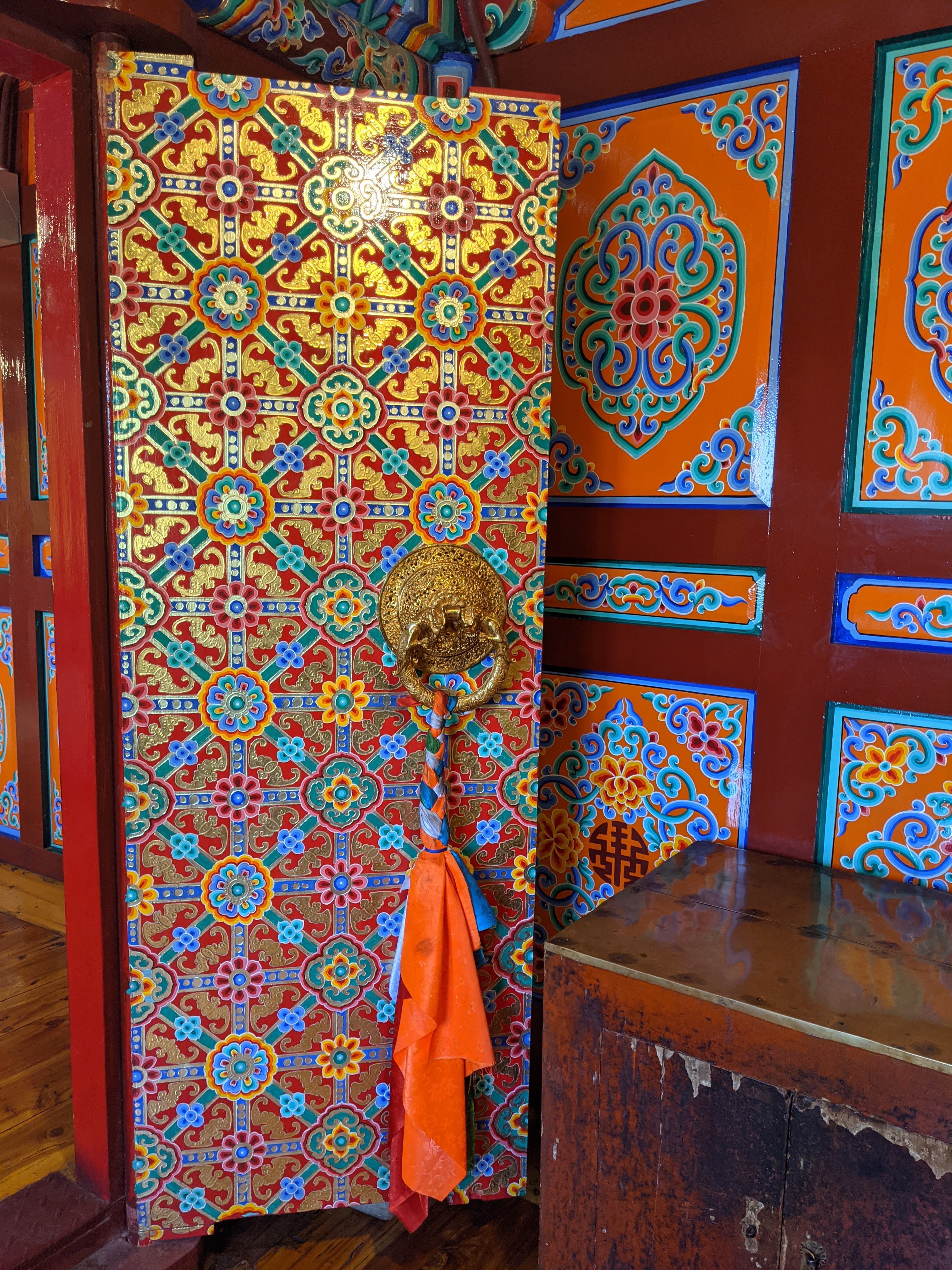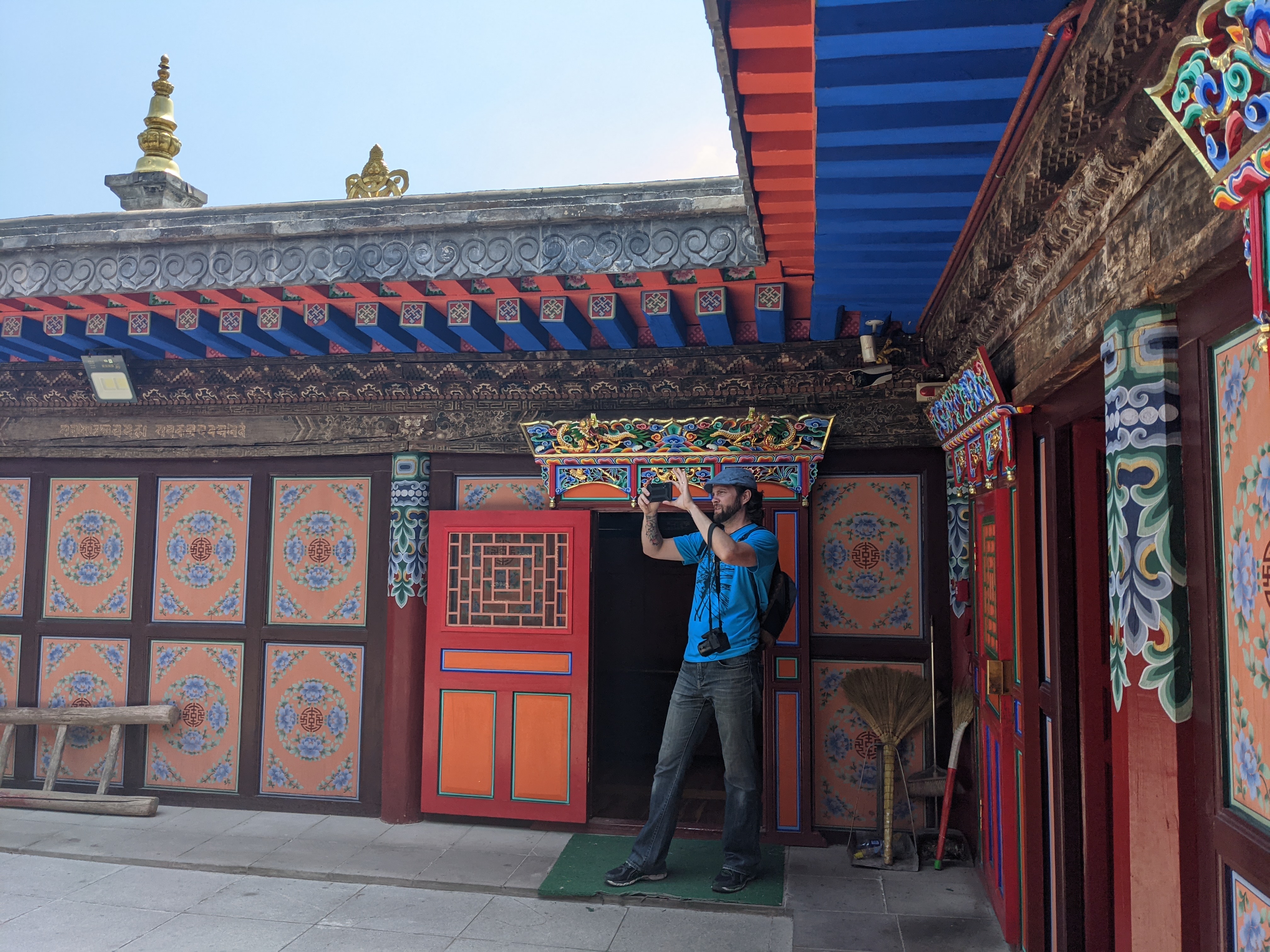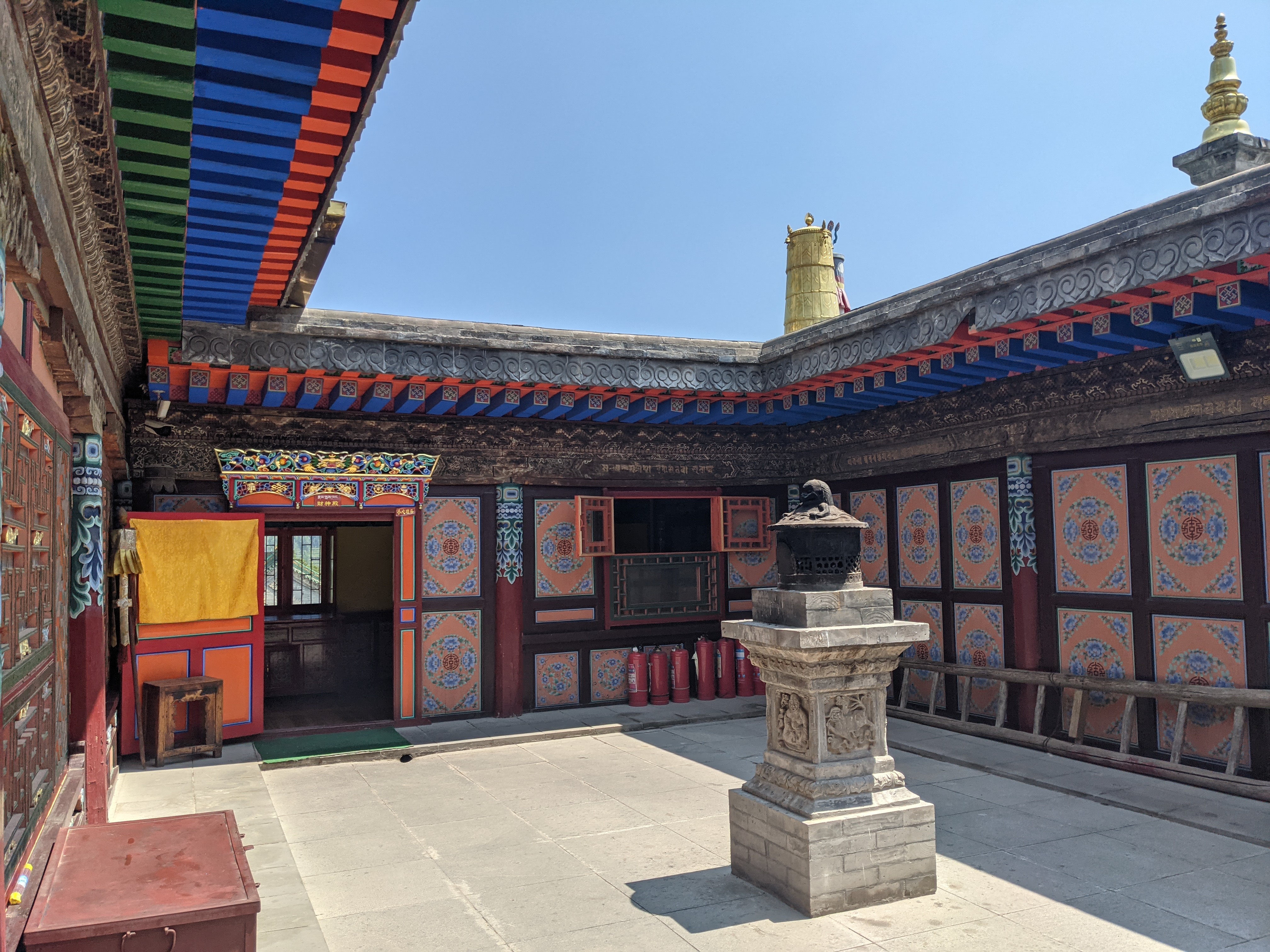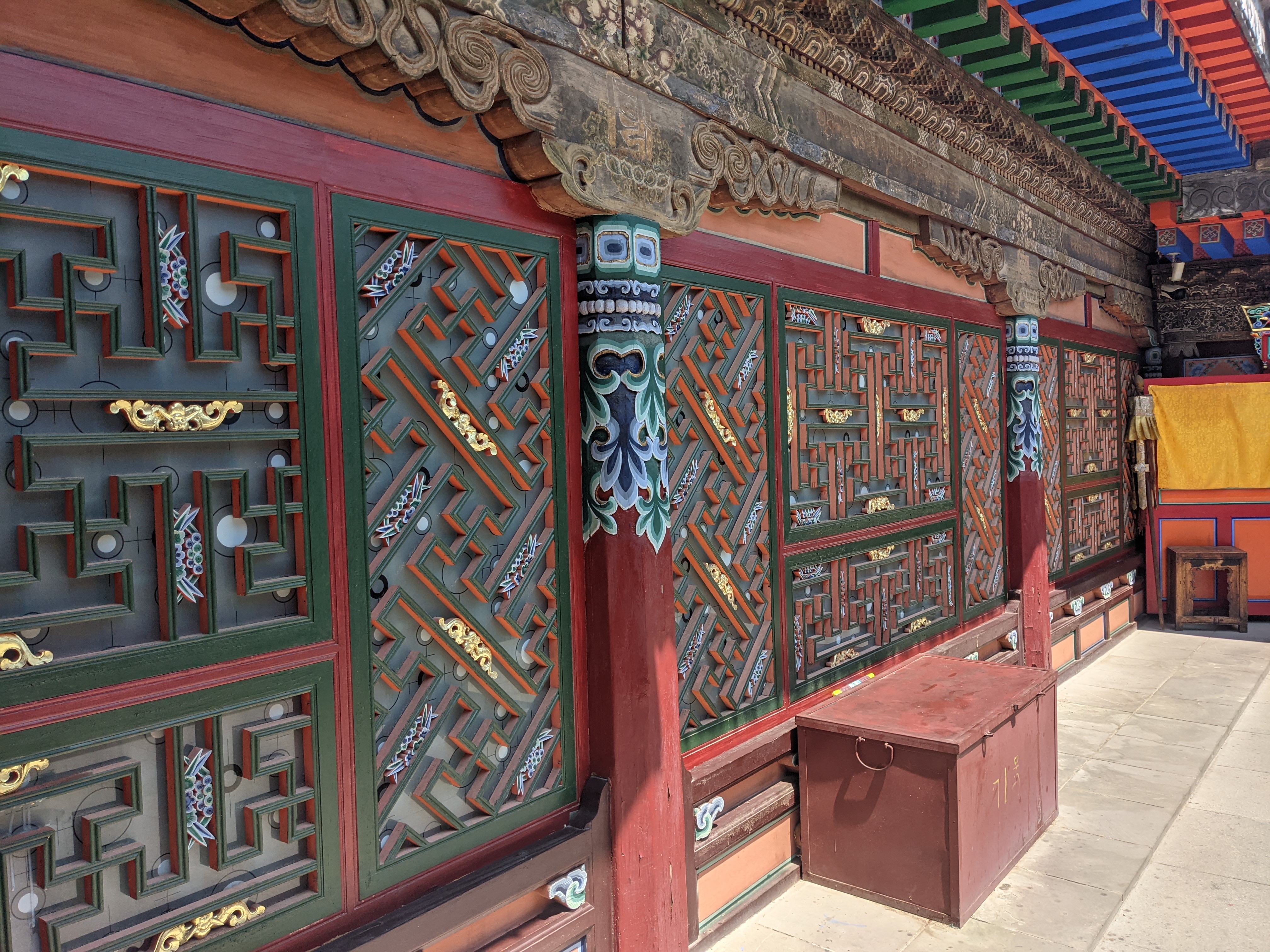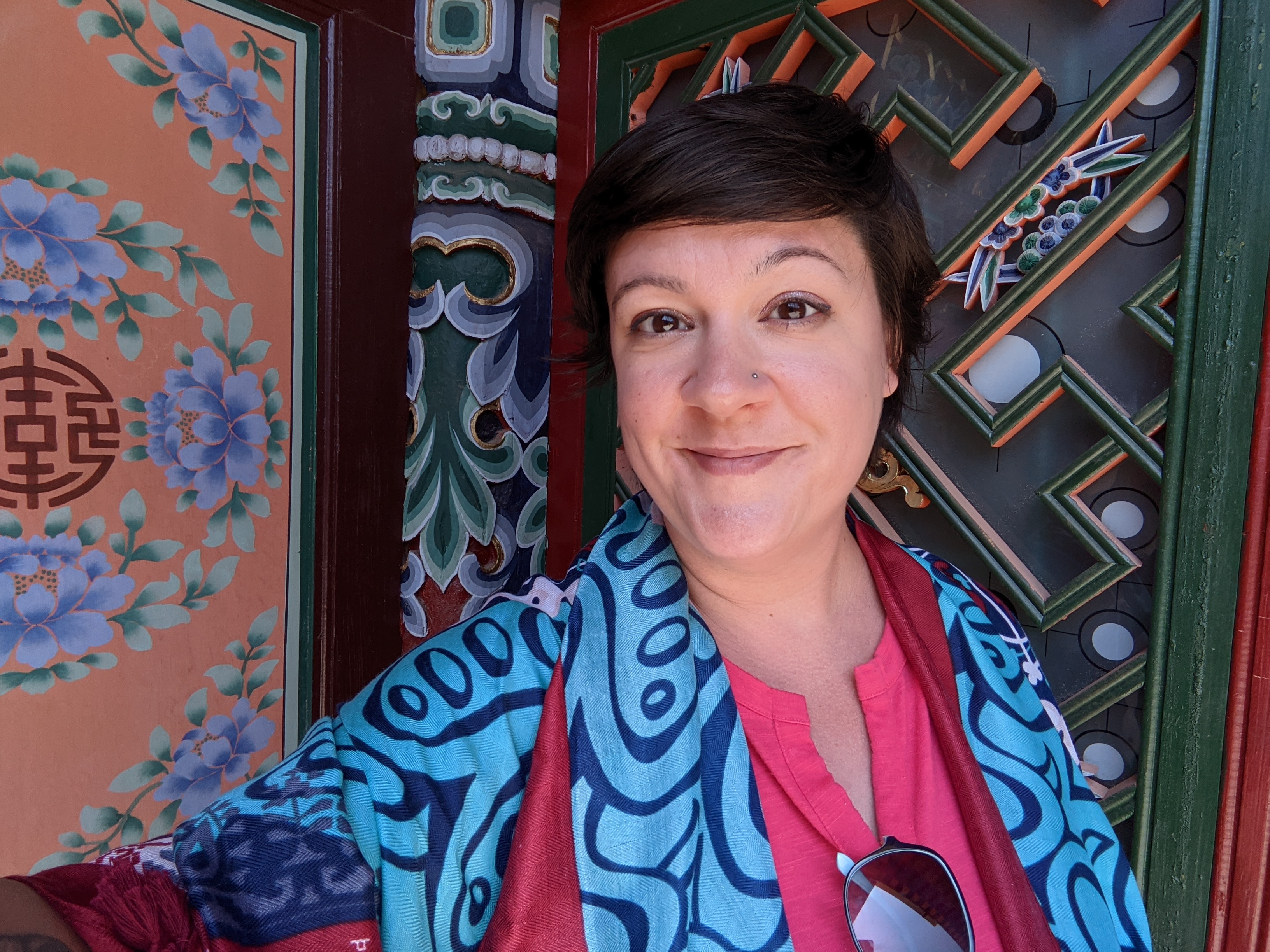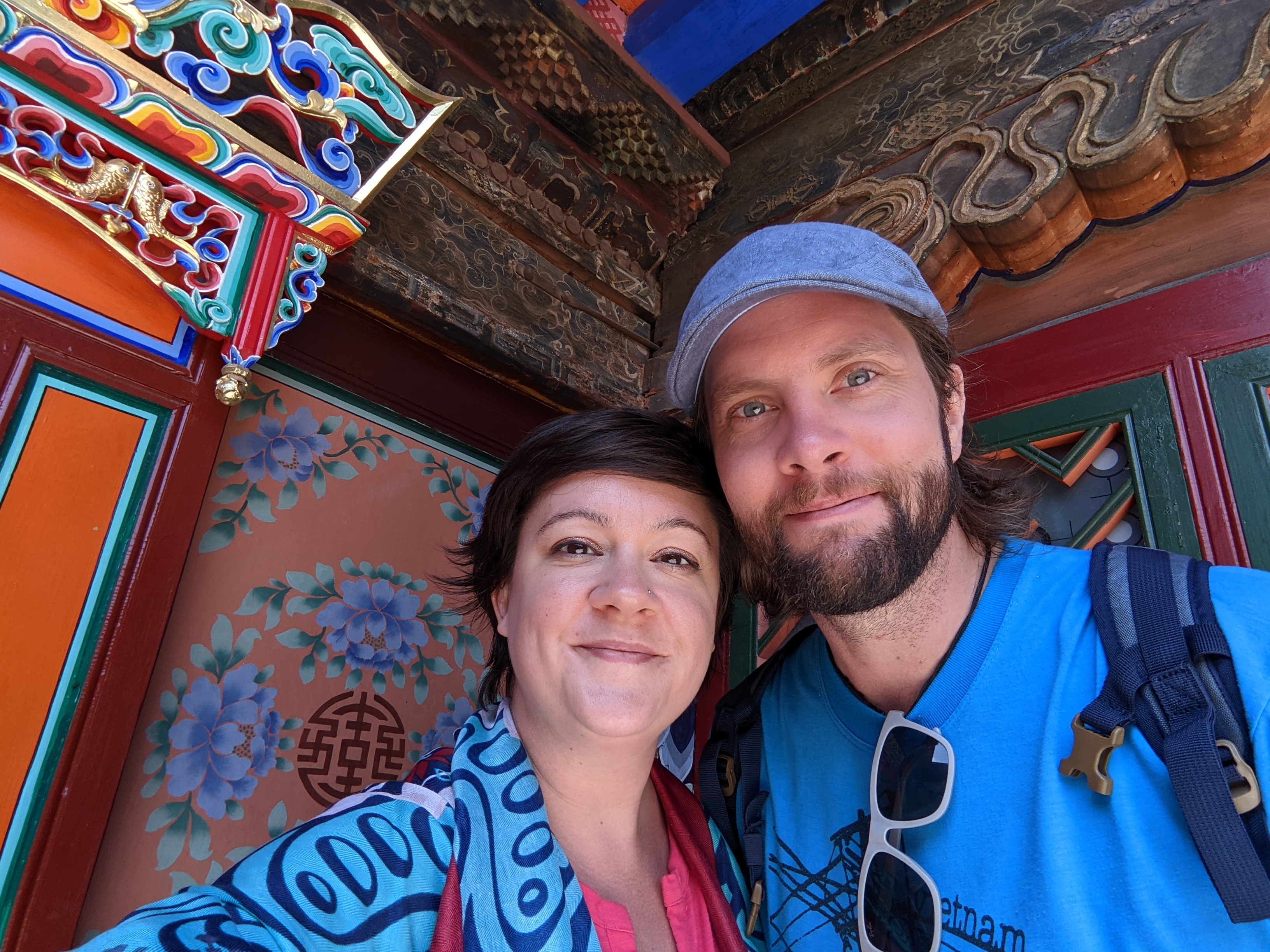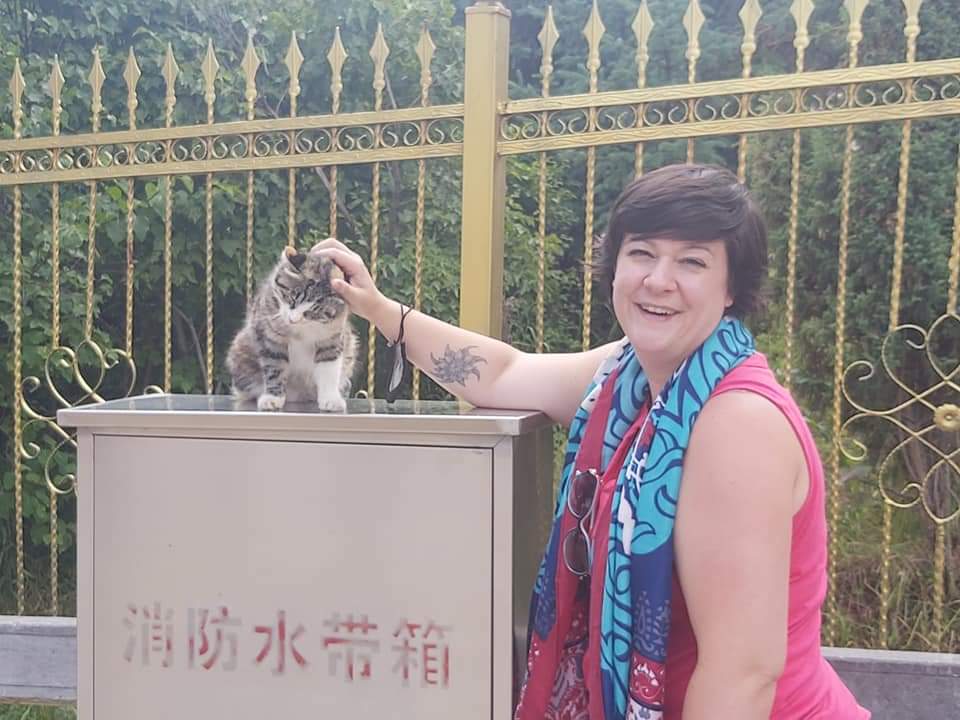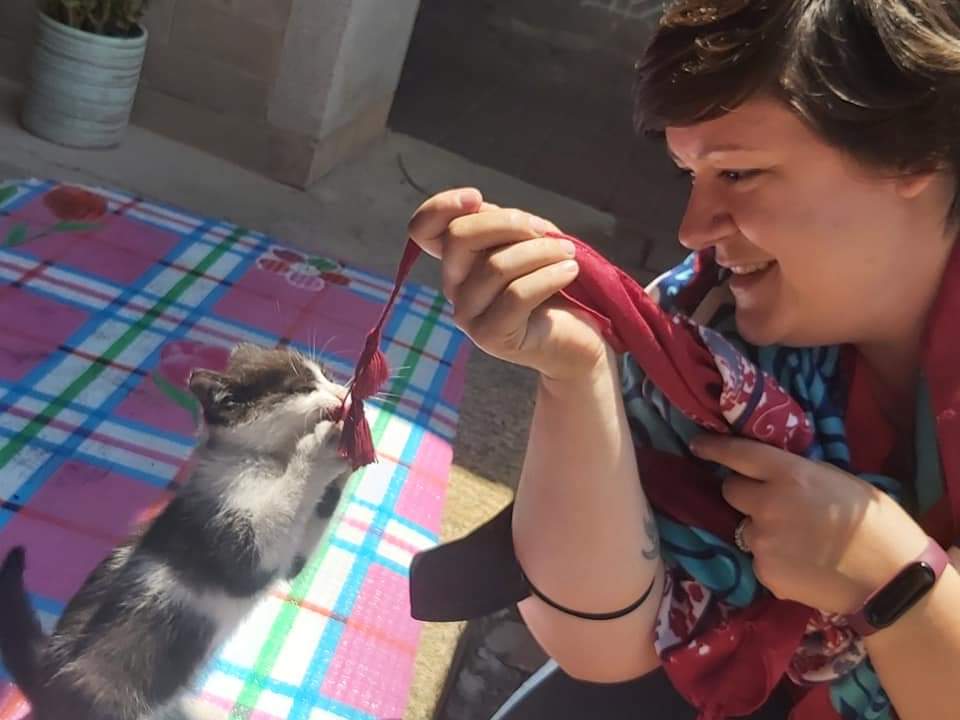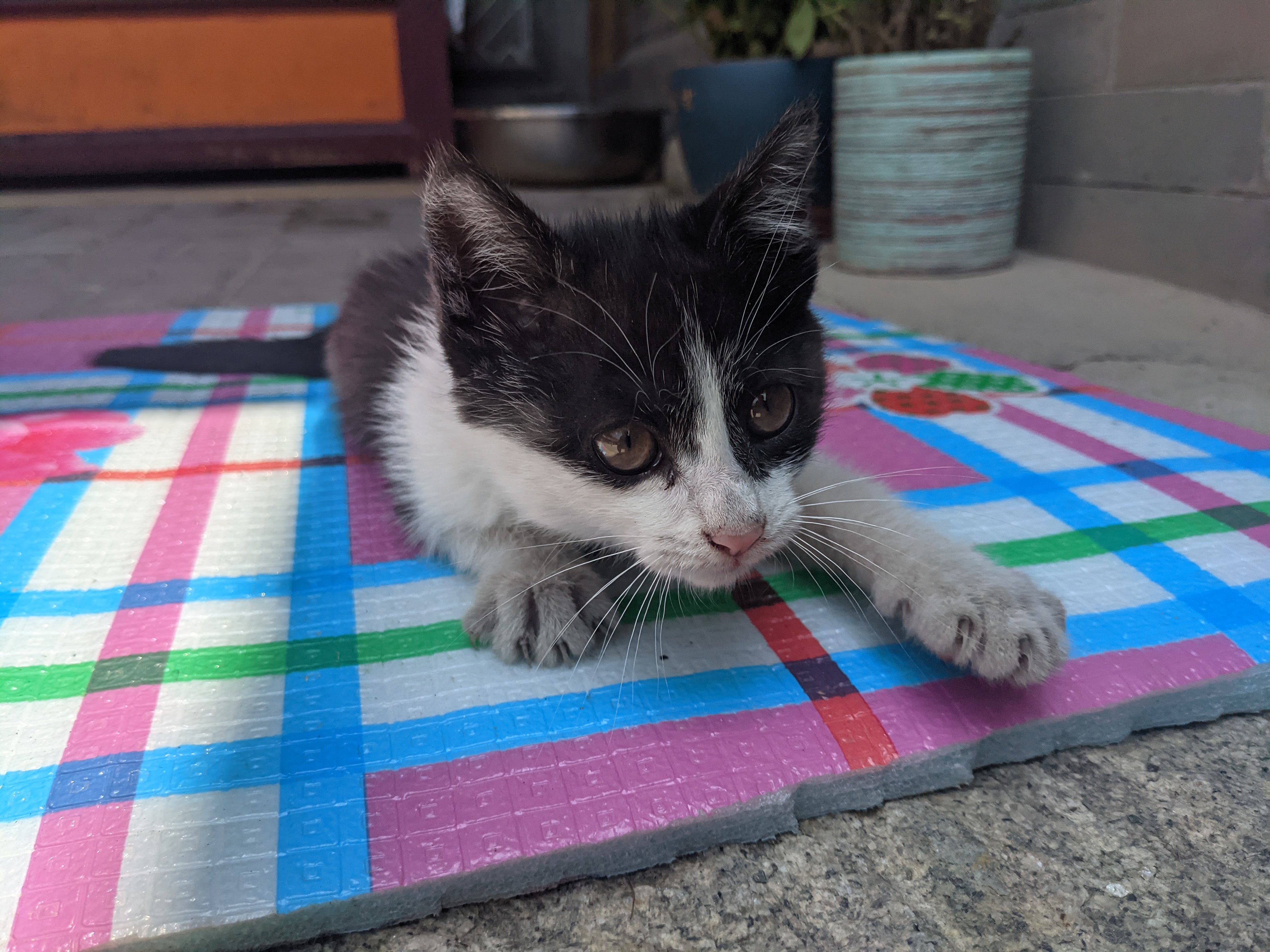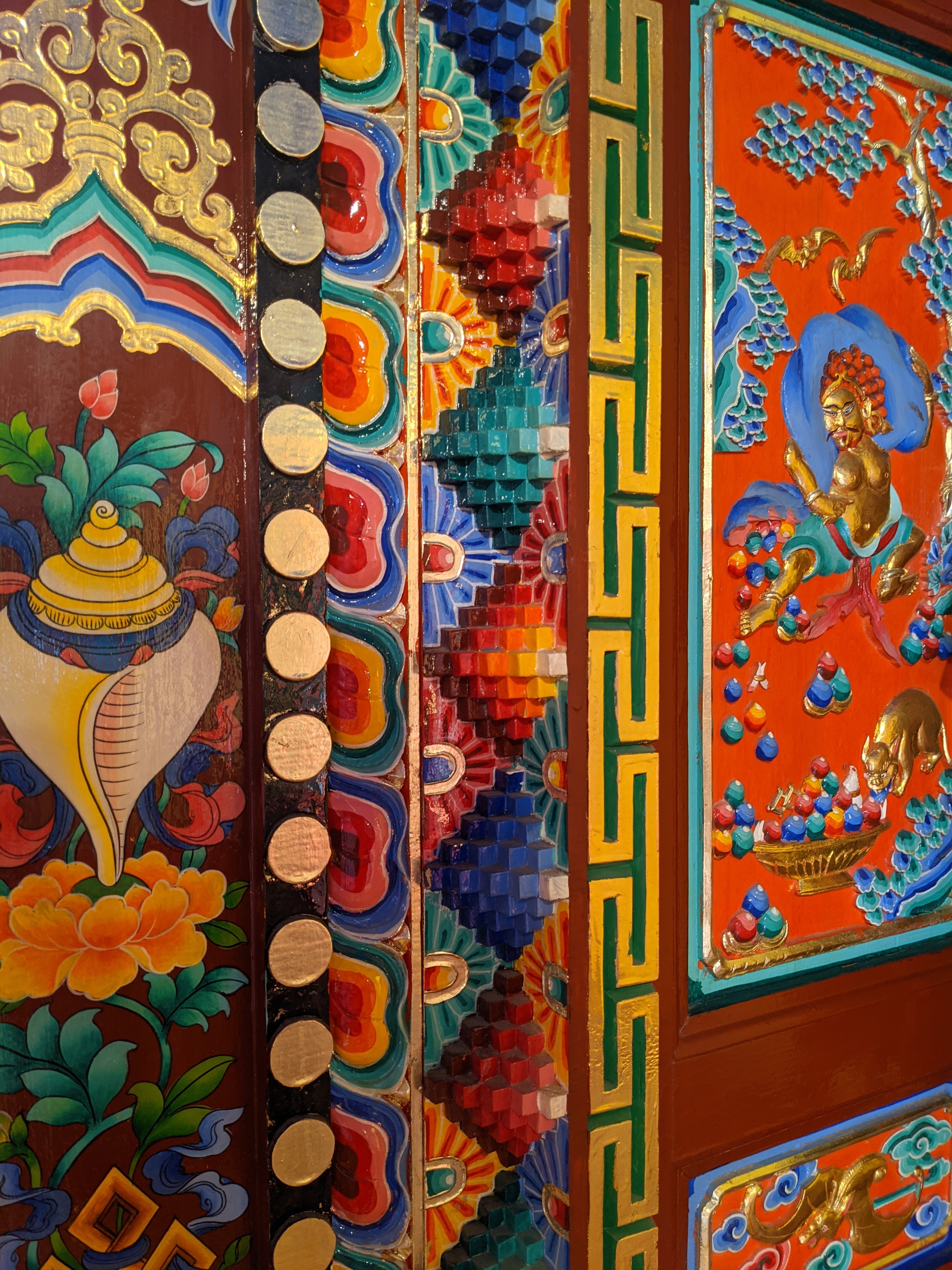In 1577, a monestary was built at the birthplace of Tsongkhapa, the founder of the Gelugpa sect of Buddhism. It was called Kumbum Jampa Ling, which means “supreme Buddhist temple with one hundred thousand lions’ roar Buddhist images”.
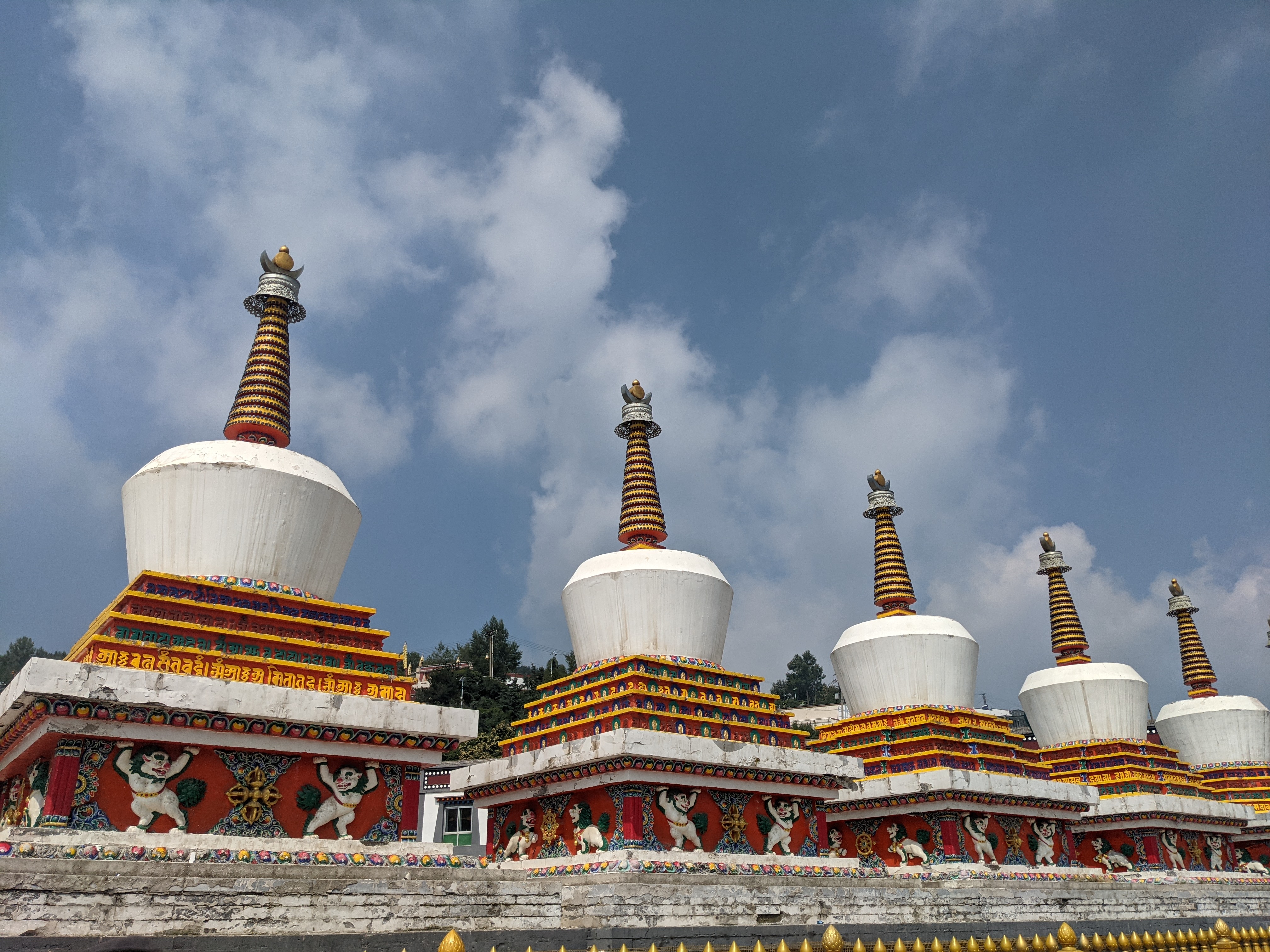
In its hay day, this temple was home to 3600 monks. Rulers during the Qing dynasty donated Buddhist art, stupas, statues and many other treasures. Even today, Kumbum is home to more than 100,000 relics. In other words, it is a very important location for Buddhism, and also for history.
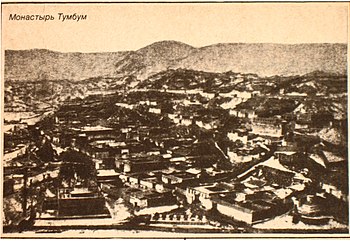
Now, around 400 monks still live at the monestary, and even though it isn’t the same as it once was, it is still a very impressive place to visit. We spent 3 hours roaming around the monestary, admiring the architecture, Buddha’s, art, and the scenic environment.
What impressed me most about Kumbum temple was the architecture. I’ve never seen so many colours (except maybe in India!). Every building has elaborate designs and the most vibrant colors! There were a few rooms that allowed photos, so I was able to get some examples for you.
We saw worshippers praying, enormous prayer wheels and so many impressive Buddha’s. So much of the most beautiful things in the temple couldn’t be photographed, of course, but I was very happy that there were a few places where it was permitted.
There were quite a few tourists and pilgrims at the monestary. Kumbum is considered one of the most important temples in the Tibetan Plateau. Many people were there to pray, light candles, and worship in various ways. It always upsets me when I see people taking photos of pilgrims or items of religious importance. When we first walked in, several monks were telling off some Chinese tourists for photographing them as they were walking around the Stupas. I had actually been photographing the Stupas at that time and I made sure those pilgrims knew that I had my camera up and focusing on the structures, and not on them.
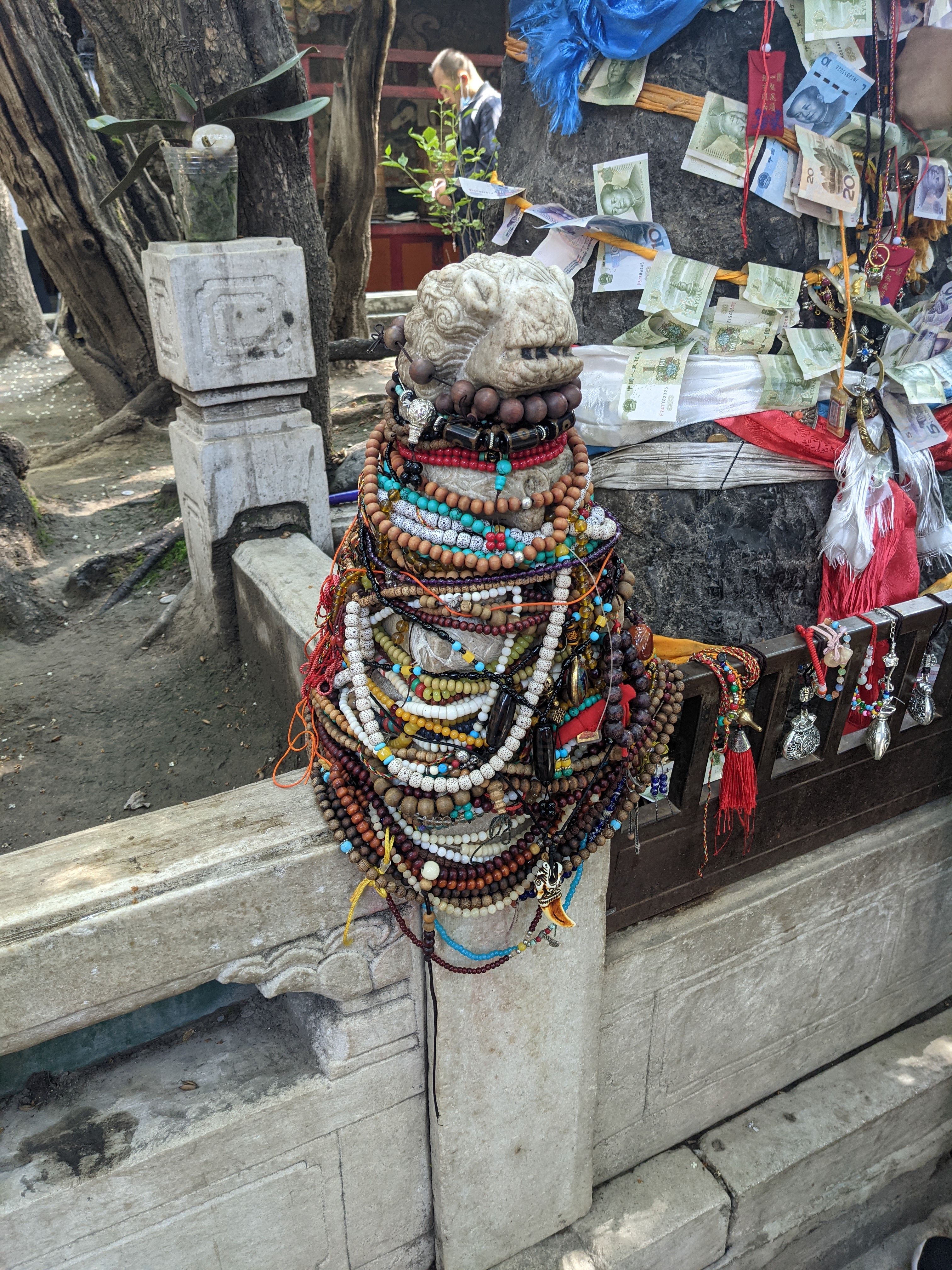
One other thing that really made me feel good about monestary was the wildlife. There were also many friendly felines roaming the monestary. They seemed well fed and friendly. A good sign that the people living there treat them well.
I certainly recommend this monestary for anyone visiting Qinghai. Located about a 1 hour Didi ride from Xining, Kumbum is a beautiful place to visit and with an entrance fee of less than 100rmb ($20), it’s an affordable place to see.
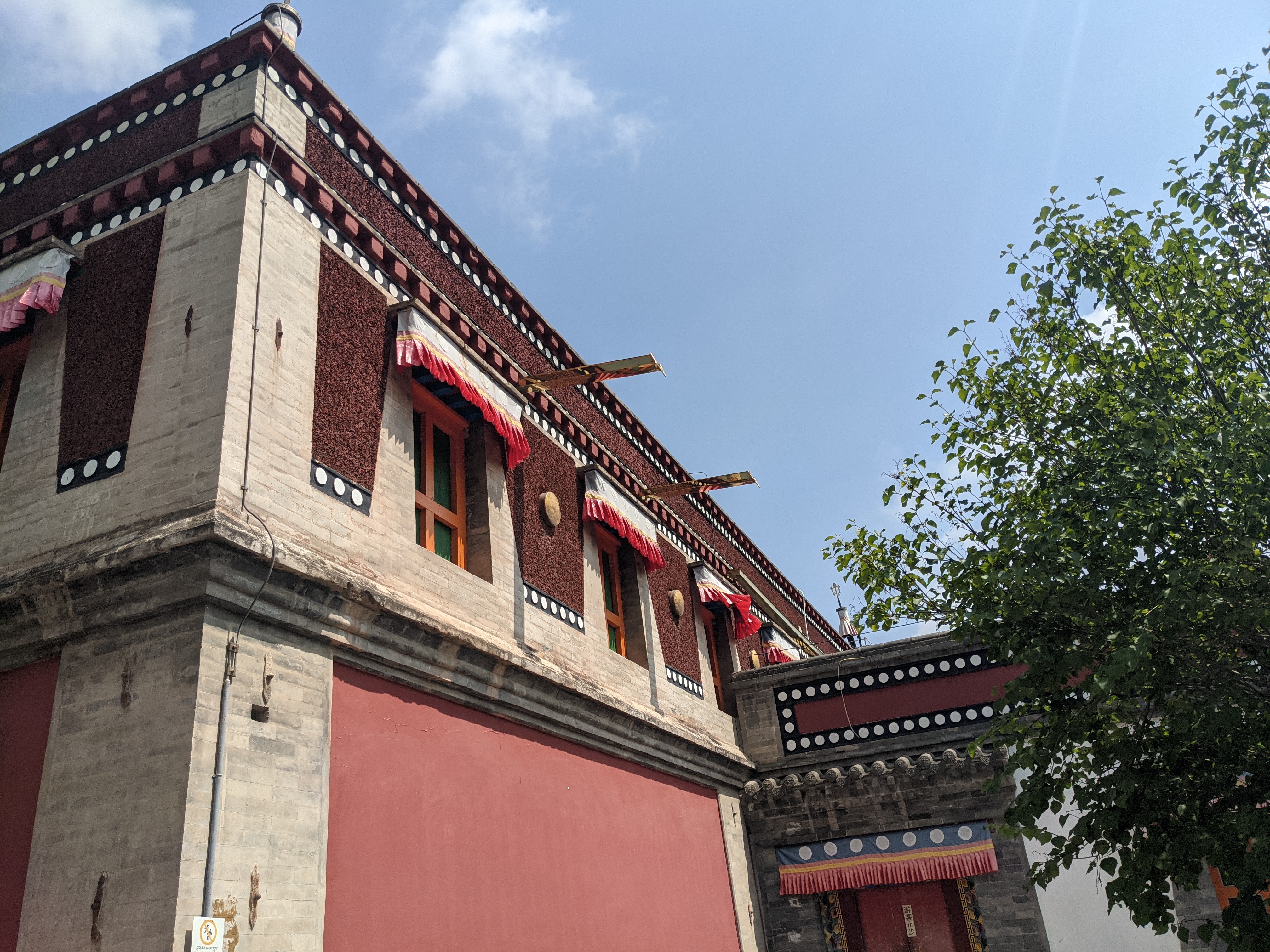
We’re just getting started on this trip! Check back soon for more!!
